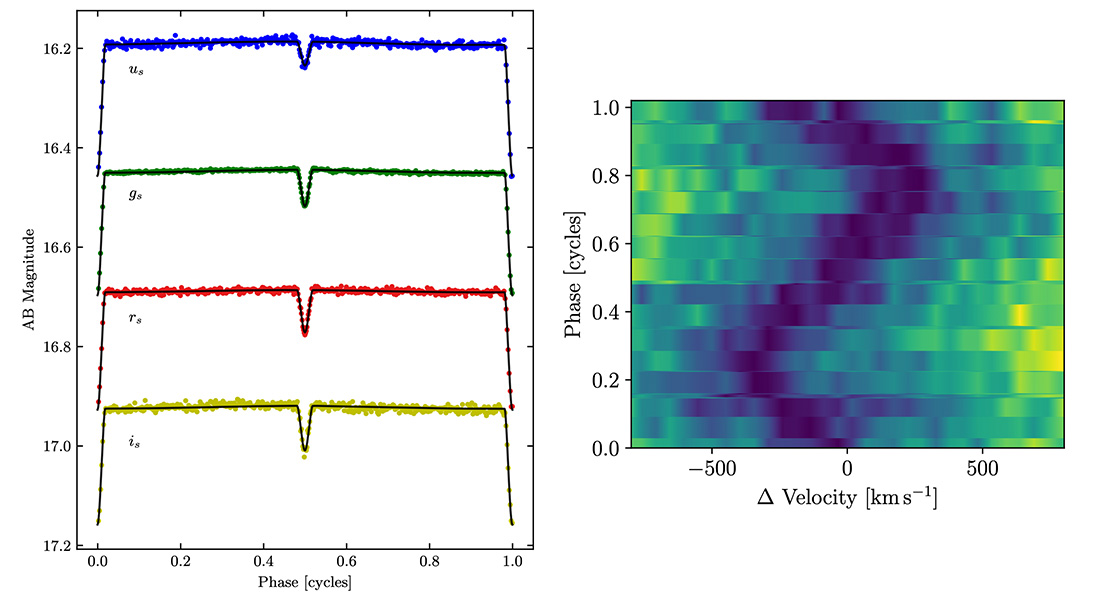TESS’s first gravitational wave source

In August 2023, a manuscript led by James Munday from the University of Warwick and including members of the BUWD group (Munday, Tremblay, Hermes, et al. 2023) announced the discovery of an eclipsing, 47.19-min double-white-dwarf binary first identified by NASA’s Transiting Exoplanet Survey Satellite. The pair of stars are massive enough (0.40 and 0.28 solar masses) and close enough (separated by roughly the distance from the Earth to the Moon) that they are an extremely strong source of gravitational radiation, ripples in the fabric of space. The system is likely the first binary identified by the TESS mission that will in the future have its gravitational wave radiation directly detected by the LISA space mission. The manuscript has been published in the Monthly Notices of the Royal Astronomical Society.